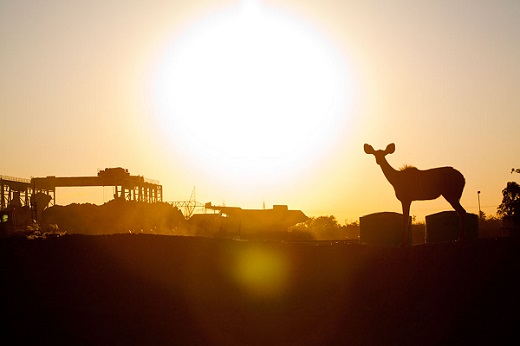De Beers Returns to Profit as Market Recovers
 RAPAPORT... De Beers went back into the black in the first half of the year as sales and production rebounded from the Covid-19 crisis.Underlying earnings at the diamond miner reached $267 million for the six months ending June 30, compared with a loss of $214 million a year earlier, parent company Anglo American reported Thursday. Revenue more than doubled to $2.9 billion versus $1.22 billion in the first half of 2020, when the pandemic sapped demand across the supply chain.The sales recovery drove the rebound in profitability, as did lower costs. The unit cost of production dropped to $59 per carat compared with $62 a year earlier. Higher production led to a reduction in expenses relative to the volume of carats recovered, the company explained. De Beers raised output from its mines by 37% year on year to 15.4 million carats in response to improved market conditions."Global consumer demand for diamonds continued to recover from the impact of Covid-19, supported by fiscal stimulus in the US and the rollout of Covid-19 vaccines," Anglo American explained. "Restrictions on international travel and entertainment over the course of the pandemic resulted in higher discretionary spending on luxury goods, including diamond jewelry."Rough sales surged to $2.6 billion from $1 billion a year earlier, with other revenues coming from Element Six, De Beers' industrial-diamond unit, and from its retail brands. Rough sales volume grew to 19.2 million carats, up from 8.5 million carats in same period of 2020. The average selling price increased 13% to $135 per carat as demand shifted to higher-value goods. The company's rough-price index ended the half 14% higher than at the beginning of the period.Cutting centers saw strong polished sales during the half year as consumer demand picked up, De Beers noted. India's Covid-19 outbreak reduced manufacturing capacity in April and May, while diamond-grading backlogs had a further impact on the market. This led to shortages, boosting polished prices, the company continued. "The recovery of demand in all parts of the pipeline enabled rough-diamond producers to destock at the start of 2021," De Beers added. "This robust demand, combined with supply constraints arising from production challenges, created a favorable dynamic in the first half of 2021 that also supported higher rough-diamond prices."Image: The Orapa mine in Botswana. (De Beers)
RAPAPORT... De Beers went back into the black in the first half of the year as sales and production rebounded from the Covid-19 crisis.Underlying earnings at the diamond miner reached $267 million for the six months ending June 30, compared with a loss of $214 million a year earlier, parent company Anglo American reported Thursday. Revenue more than doubled to $2.9 billion versus $1.22 billion in the first half of 2020, when the pandemic sapped demand across the supply chain.The sales recovery drove the rebound in profitability, as did lower costs. The unit cost of production dropped to $59 per carat compared with $62 a year earlier. Higher production led to a reduction in expenses relative to the volume of carats recovered, the company explained. De Beers raised output from its mines by 37% year on year to 15.4 million carats in response to improved market conditions."Global consumer demand for diamonds continued to recover from the impact of Covid-19, supported by fiscal stimulus in the US and the rollout of Covid-19 vaccines," Anglo American explained. "Restrictions on international travel and entertainment over the course of the pandemic resulted in higher discretionary spending on luxury goods, including diamond jewelry."Rough sales surged to $2.6 billion from $1 billion a year earlier, with other revenues coming from Element Six, De Beers' industrial-diamond unit, and from its retail brands. Rough sales volume grew to 19.2 million carats, up from 8.5 million carats in same period of 2020. The average selling price increased 13% to $135 per carat as demand shifted to higher-value goods. The company's rough-price index ended the half 14% higher than at the beginning of the period.Cutting centers saw strong polished sales during the half year as consumer demand picked up, De Beers noted. India's Covid-19 outbreak reduced manufacturing capacity in April and May, while diamond-grading backlogs had a further impact on the market. This led to shortages, boosting polished prices, the company continued. "The recovery of demand in all parts of the pipeline enabled rough-diamond producers to destock at the start of 2021," De Beers added. "This robust demand, combined with supply constraints arising from production challenges, created a favorable dynamic in the first half of 2021 that also supported higher rough-diamond prices."Image: The Orapa mine in Botswana. (De Beers)